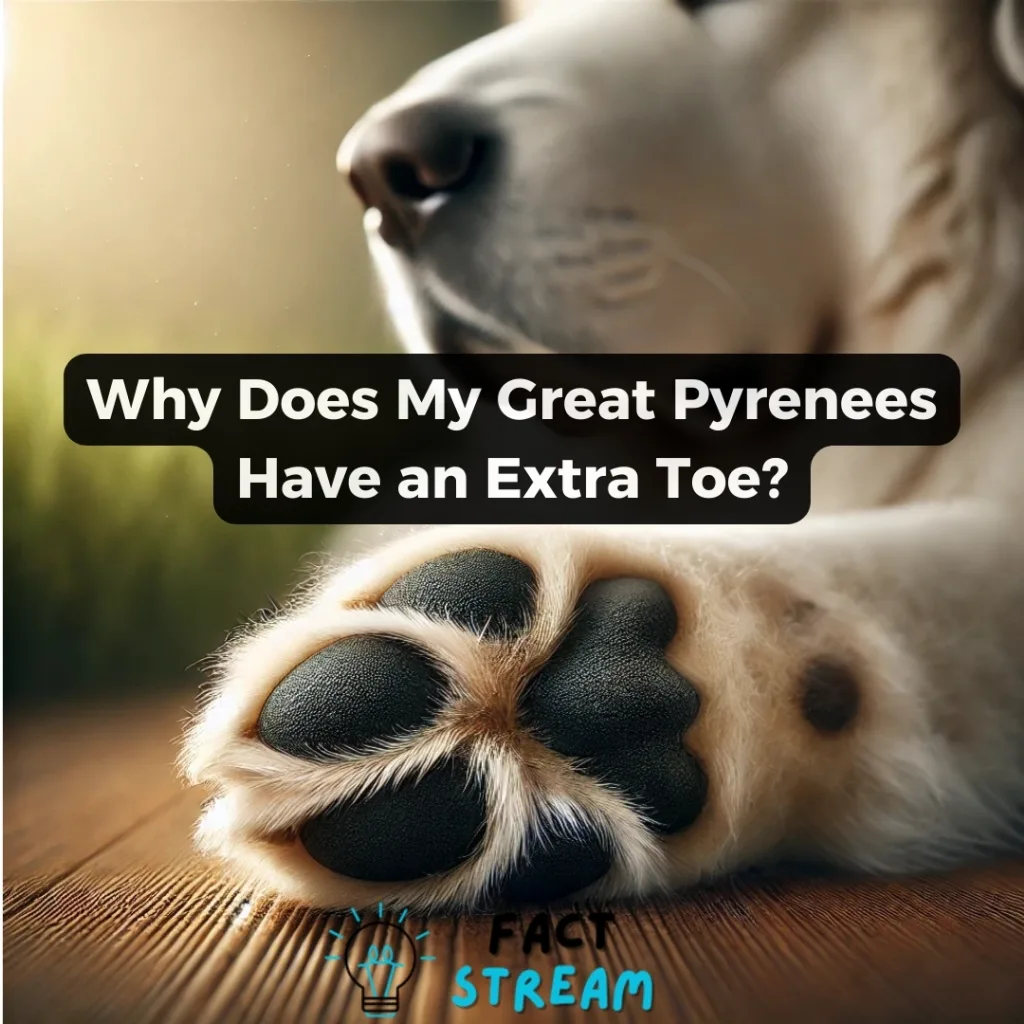Why Does My Great Pyrenees Have an Extra Toe?
Great Pyrenees are known for their majestic appearance and sweet temperament. They are giant breed dogs with thick white coats, and they often sport a unique feature: double dewclaws on their hind legs. This can be startling to new owners, but these extra toes are perfectly normal, and they actually serve a purpose. If you’re asking, “Why does my Great Pyrenees have an extra toe?” This post is for you.
Great Pyrenees have double dewclaws because of their history as working dogs in mountainous regions. These extra toes, located higher up on the leg than the other toes, provide additional traction and stability when climbing or walking on rough terrain. Think of them as built-in snowshoes! In fact, the United Kennel Club (UKC) breed standard for Great Pyrenees actually requires double dewclaws. A Great Pyrenees with only single dewclaws may not be purebred, and some breeders may remove double dewclaws to hide this fact.
Dewclaws: Not Just for Show
Some people think that dewclaws are vestigial, meaning they no longer serve a purpose. However, dewclaws are functional and useful, even for modern dogs who don’t spend their days scaling mountains.
Here are a few ways Great Pyrenees use their dewclaws:
- Climbing: The double dewclaws provide extra grip and stability, making them excellent climbers.
- Sharp Turns: Dewclaws can dig into the ground, helping dogs make sharp turns without slipping or injuring themselves.
- Gripping Ice and Swimming: Dewclaws act like hooks on slippery surfaces, giving dogs traction on ice and helping them swim.
- Protecting Feet: Dewclaws stabilize the wrist and ankle joints, protecting the surrounding soft tissues from injury.
- Gripping Objects: Dogs use their front dewclaws to hold onto toys and bones while chewing.
Caring for Your Great Pyrenees’ Dewclaws
While dewclaws offer many benefits, it’s important to care for them properly. The nails on dewclaws, just like regular toenails, need to be trimmed regularly to prevent them from overgrowing, snagging, and breaking. Dewclaws don’t touch the ground, so they don’t get worn down naturally. Overgrown nails can curl around and grow into the foot, causing pain and infection.
To trim your Great Pyrenees’ dewclaws:
- Use a sharp nail clipper designed for dogs.
- Be careful not to cut the quick, which is the pink part of the nail that contains blood vessels and nerves.
- If you’re unsure how to trim your dog’s nails, ask your veterinarian or a professional groomer for help.
Should Dewclaws Be Removed?
Surgical removal of dewclaws is a common practice, but in most cases, it is unnecessary and can even be harmful. Removing dewclaws that are attached by bone involves cutting through nerves, tendons, and ligaments, which can be painful for the dog and may lead to complications. The American Kennel Club recommends leaving dewclaws intact unless there is a medical reason for removal.
When Is Dewclaw Removal Necessary?
There are a few situations where dewclaw removal may be necessary:
- Ingrown Nail: If a dewclaw nail grows inward, it can cause pain and infection.
- Frequent Snagging: If a dewclaw is positioned in a way that it frequently gets caught on objects, it may need to be removed to prevent injury.
- Disease: If a dewclaw is diseased, cancerous, or has a tumor, removal may be the best option to prevent the spread of disease.
If you’re concerned about your Great Pyrenees’ dewclaws, talk to your veterinarian. They can help you assess the situation and determine the best course of action.
Embracing Your Great Pyrenees’ Unique Features
Double dewclaws are a normal and healthy part of the Great Pyrenees breed. These extra toes are a testament to their history as working dogs and provide a number of benefits. By understanding the purpose of dewclaws and caring for them properly, you can help your Great Pyrenees stay healthy and happy for years to come.


